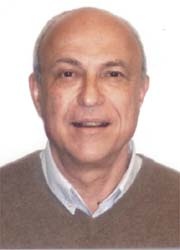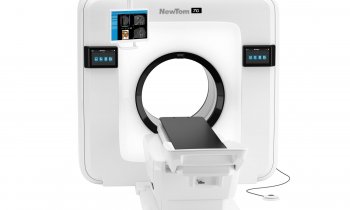Radiology in Israel
Professor Moshe Graif, President of the Israel Radiological Association, Chairman of Radiology at The Tel Aviv Sourasky Medical Centre, and Chair of Radiology at the Faculty of Medicine, Tel Aviv University, in conversation with Daniela Zimmermann
of European Hospital
Comparing radiological practices in Israel with those of Europe and the USA, Professor Graif explained that his country combines both.

‘Usually most radiologists do their fellowships in the US, so they follow American radiology model. On the other hand, our economical and political systems are closer to Europe. So you learn in one part of the world, but practice in another. Usually it’s a compromise between two situations.’
‘The American radiologists operate in a different setting. There is a fee for service system and they are compensated for every procedure – while the services in Israel are incorporated in the hospitalisation cost. This enables them to generate more revenues and consequently purchase more equipment and hire more staff. In the actual settings in Israel, it’s very difficult to follow strictly all practice recommendations. However, I guess that European radiologists are gradually adopting American models and working patterns. More radiologists and administrators go to the States to take part in academic meetings or fellowship programmes. Most of them participate regularly at the RSNA and they publish more in American professional journals. The ECR meeting in Vienna and the JFR meeting are becoming very similar to the RSNA.
‘As I mentioned previously, working patterns in Israel are also influenced by the European models. Take, for example, the close clinician-radiological contact. In Israel, all wards meet the radiologist once or twice a week on a regular basis, in some hospitals they may meet on daily bases. We have a continuous dialogue and exchange of information.’
Isn’t information exchanged by reporting as good as exchanging information face to face?
‘Insufficient clinical information is a common problem almost everywhere and is known to affect the quality of the report. Information is more inclusive when you discuss it directly with the clinician, and you can have a better exchange of ideas and maybe suggest an alternative diagnosis.’
Is a lot of research carried out in Israel?
‘Yes, but it’s getting harder to carry out research, because the increasing workload reduces the time designed for research.’
Are you trying to influence your government to change this?
We do, but it’s very difficult because most governments, ours included, tend to decrease their healthcare costs; our expenditure is about 8.5% of the gross national product (GNP).’
That’s nothing compared with America.
‘Of course, I think Germany is around 11-12%, and England is in the order of 7.5 % of the GNP. So, we’re somewhere in a mid-low position in this respect.’
Nonetheless, you try to access more money for research?
‘Usually the research is carried out by private companies and entrepreneurs that take the initiative. They may purchase radiological services that will help to develop their projects. There are two main types of research. Research into development of radiological equipment or software tools is one. This requires beta sites to test their equipment. Pharmaceutical research is the other type, where you are asked to conduct or take part in clinical studies examining the effectiveness of a therapeutic agent.’
I’m sure Israel’s constant military conflicts influence radiology in terms of trauma, in which you must be experts.
‘We are trained in trauma, because when you are exposed to it repeatedly you acquire experience, and you do it far better. So we develop models for working with trauma.
A multi-casualty event (MCE) usually creates huge chaos and the first time you find yourself in such a situation, the confusion may have a significant impact on your performance. But once you get into routines, the patient care is definitely improved.
I remember my first time. Every doctor and medical personnel in the area rushed to the hospital. There were hundreds of doctors and nurses; their cars couldn’t be parked and were scattered around the hospital premises. Everyone was trying to do his best but the co-ordination was compromised. After several events, only the essential staff arrived to the hospital grounds. Everyone was familiar with his tasks and the protocols those who shouldn’t be there according to the plans, stays at home and we call them if needed. It’s much more efficient. There is a briefing procedure after each event. Every sector, doctors, nurses, technicians and administrators is represented at the briefing. Everybody’s together, whatever time it is when the event is declared finished. We go through the event and try to point out mistakes and difficulties encountered with the purpose to avoid them in the future. Those are very effective methods.’
Did experts from Israel help with the trauma situation in Madrid?
‘I don’t know; although we usually volunteer to share our experience. Much of our data is available in the literature as articles or books and helps to establish schemes and routines for hospital preparedness.
‘ Fortunately, in Europe, this expertise is less needed at the moment. A traumatic event which occurs sporadically, as in Spain, it is not sufficient to maintain the necessary skills.’
30.10.2007











